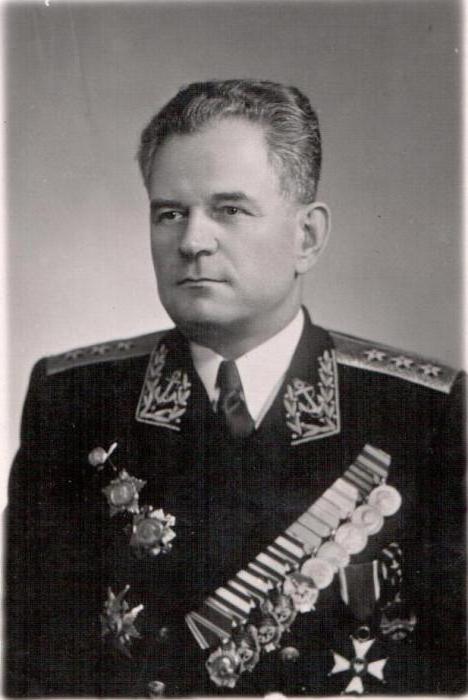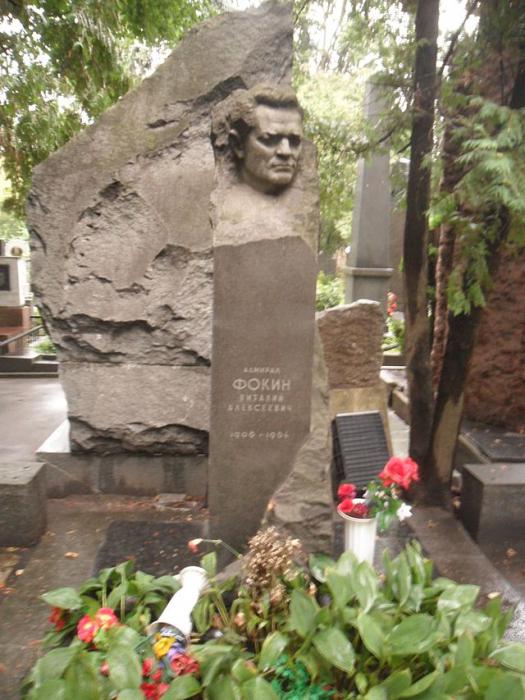One of the most outstanding and talented military leaders of our country is Admiral Fokin. He introduced order and strategy into the structure of the naval forces. His achievements and exploits during his service and during the war are an example for many who are starting a career in military affairs. The navy is the protection of the country from the sea, its proper organization and control of forces are the most important strategic element. Admiral Fokin understood this perfectly and made effective changes to the functioning and organization of naval forces. He was known as a wise, calm and simple person. The admiral's friendliness sometimes perplexed people. He remembered all the names and titles of people he encountered during his military service. It doesn’t matter who was in front of him - a simple sailor or commander - Fokin Vitaliy Alekseevich called everyone by name and remembered their slightest achievements. This helped him to establish good and good relations with all employees in the fleet. The exploits of this great man are embodied in the names of cities, streets and cruisers.

The beginning of the path of Admiral Fokin
The date of birth of Vitaliy Alekseevich falls on March 4 according to the old calendar of 1906. The future hero was born in a simple, working-class family. His father was a stove-maker, nothing indicated that the born boy would step on the military career ladder. In 1922, Vitaly began his service in the navy, to which he devoted his whole life. Young Fokin graduated from the naval school and class navigator command staff. Admiral Fokin carried his service on the Aurora cruiser as a commander, and later as a navigator. Service on the cruiser was considered necessary, as it prepared the crew in the best way because of the versatility of the ship. “If you served on the cruiser, then you thoroughly know the Ship's charter,” - that's what the sailors said.
Ranks and promotions
After serving on the cruiser, Vitaliy Alekseevich was transferred to a patrol ship as a commander. Further, Fokin was entrusted with command of the destroyer division, the Northern Fleet. During the war, in 1942, under the leadership of Fokin, support was provided for the ground forces and northern convoys. Also, with its help, the landing was carried out. In the same year, the admiral was wounded and received a concussion. Having recovered from his wounds, Vitaliy Vasilievich heads the headquarters of the Caspian flotilla. Later, at the end of the war, he was transferred to the Northern Fleet as commander of a squadron.
At the end of the war, he holds mainly staff posts. The title of admiral Vitaly Vasilievich received in 1953. The navy of the USSR and its main headquarters were under the experienced leadership of Fokin for several years. The Pacific Fleet came under the command of the admiral several years later. He served as the first deputy commander in chief (Navy of the USSR) for two years since 1962. Later he ran for the deputies of the Supreme Council, where he always honestly and regularly carried out the orders of voters.
Achievements during the Great Patriotic War
During the service, Vitaliy Alekseevich was distinguished by a perfectly built strategy. He best established himself as a talented naval commander. In just a few months, ships under his command successfully installed six minefields. They exterminated more than two thousand Germans, two dozen artillery batteries and several enemy ammunition depots. The admiral’s fast and effective military tactics earned him many rewards. During the war he was seriously wounded, after which he served in headquarters.
Admiral's Awards
Vitaly Vasilievich earned many awards and medals in the military field. He was awarded for courage, courage and contribution to the development of the Navy. His achievements in the war also did not go unnoticed. The admiral was presented to the orders:
- Lenin.
- Red Banner (four awards).
- Nakhimova (first degree).
- Ushakova (second degree).
- Red Star.
In addition to his services to his native country, the admiral was presented to international awards. There was no place for medals on his dress uniform. Fokine has become the country's pride and role model.
The legendary cruiser named after Admiral Fokin
The history of the famous ship began in 1960 (the date the cruiser was laid in the North Shipyard). A year later, the ship was launched. Before joining the Pacific Fleet (1964), the ship was called Vladivostok. After he was renamed in honor of Admiral Fokine. RRC "Admiral Fokin" kept its watch on the expanses of the Pacific and Indian oceans with the aim of friendly visits to the ports of Asia. All those present at the appearance of the cruiser in the port admired the power and military staffing of the personnel. The cruiser Admiral Fokin was considered a prestigious ship for service. The ship went on long voyages under the command of M.F. Pichkur, captain of the first rank.
Cruiser Features
In the process of an arms race with the NATO bloc, the Soviet command decided to create a ship, not only not inferior in technical characteristics to similar enemy ships, but also superior to it. Our ships were distinguished by the lack of air platforms and the inability to protect themselves from the air. It was decided to create a missile cruiser - project 58. Initially, it was planned to lay more than a dozen ships, but in the end only four missile cruisers were launched. A peculiarity of this type of ship was the hull design, the analogues of which were not even abroad. The project 58 cruiser was considered the most efficient, powerful and unparalleled. The series of these ships included Grozny, Admiral Golovko, Varyag, and Admiral Fokin. Nowadays, cruisers are no longer used, their service time is over.
Cruiser Life
For the first time, the Fokine ship was launched in 1961. Three years later, the cruiser joined the Pacific Fleet, where he served until decommissioning. Wrecked the Pacific and Indian Oceans. The main task of the cruiser was to defend the country. The ship was famous for unmistakably hit the target. In the exercises, the first missile launched launched an ultra-precise strike, hitting the enemy’s conditional target. The accuracy of the missile guidance and the military alignment of the sailors serving the service brought the cruiser popularity and admiration for both compatriots and neighboring countries. In 1993, the path of the great cruiser ended. He was disarmed and sent for recycling.
The last years of the admiral's life
In the circles of the naval forces there are many legends and gossip about the death of the admiral. It is believed that the trigger for an extensive heart attack was a fiasco when performing the transfer of fleet forces to Cuba. In 1962, the operation was planned to redeploy the naval forces by breaking through the submarines through the US anti-submarine barriers on a narrow front. Vitaliy Alekseevich was responsible for the preparedness and control of the operation. The transfer of forces to Cuba was not successful. The culprit of the failure and failure of the plan was Fokine. The situation around the admiral was the most unfortunate way, she put pressure on him and his reputation for two years. As a result, Vitaly Alekseevich died of an extensive heart attack in 1964. His grave can be found at the Novodevichy cemetery in Moscow.

The difficult, but crowned with awards and recognition, the life of the admiral will always be an example of selfless service to the Motherland for future defenders of the Fatherland. Streets and cities are named after him, a cruiser plowed the expanses of the oceans named after him, carrying out a difficult watch to protect his homelands, fulfilling his international duty.